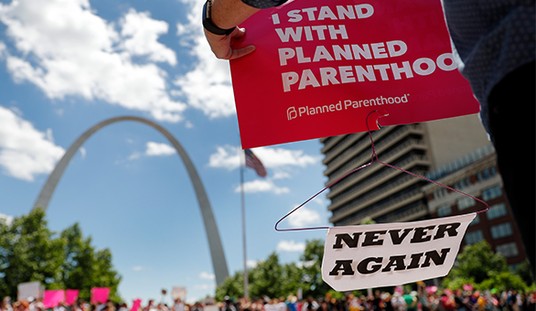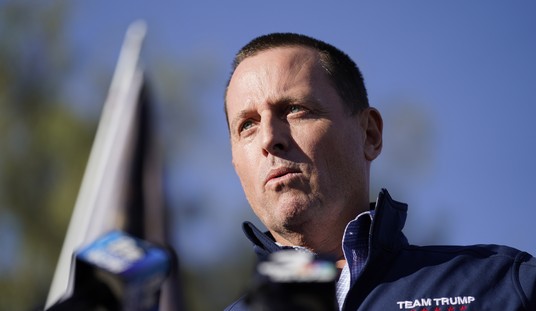
Official portrait of President Donald J. Trump, Friday, October 6, 2017. (Official White House photo by Shealah Craighead)
Last September, President Trump announced he would order the declassification and release of all relevant documents about the role of U.S. intelligence agencies in the Russian collusion probe. Additionally, the House Intelligence Committee voted unanimously to send 53 interview transcripts from their own investigation to the director of national intelligence (DNI) for review and declassification. Neither release has happened.
Investigative reporter John Solomon, who has broken most of the major news on this story, is reporting that “the long wait for transparency may soon end.” He wrote that the expected release of many of these documents this fall “could rock Washington.”
One reason for the lack of action by the intelligence community was the leadership of DNI Dan Coats, whose interests often appeared to be at odds with those of President Trump. Coats, a former Republican senator from Indiana, resigned from his post on August 15th. Coats’ deputy, Sue Gordon, known to be on the same page as he was, left the agency as well.
Two names said to be currently under consideration to replace Coats are Pete Hoekstra and Fred Fleitz. Hoekstra, a former chairman of the House Intelligence Committee, currently serves as the U.S. ambassador to the Netherlands. Fleitz is a national security expert. I think Rep. Devin Nunes (R-CA) should be included on that shortlist, however, he may be considered too partisan.
Solomon believes “the president has an opportunity to speed up and organize the release of declassified information by simply creating an Office of Transparency and Accountability inside his own White House, run by a staffer empowered at the level of a formal assistant to the president. That would prevent intelligence agencies from continuing their game of public keep-away.”
As mentioned earlier, Solomon has followed this story closely. Over the last several months, he has interviewed four dozen U.S. officials and has identified the documents which he considers that,
When declassified, would show more completely how a routine counterintelligence probe was hijacked to turn the most awesome spy powers in America against a presidential nominee in what was essentially a political dirty trick orchestrated by Democrats.
1. Christopher Steele’s confidential human source reports at the FBI (known as 1023 reports).
These documents show exactly what transpired each time Steele and his FBI handlers met in the summer and fall of 2016 to discuss his anti-Trump dossier. The big reveal, my sources say, could be the first evidence that the FBI shared sensitive information with Steele, such as the existence of the classified Crossfire Hurricane operation targeting the Trump campaign. It would be a huge discovery if the FBI fed Trump-Russia intel to Steele in the midst of an election, especially when his ultimate opposition-research client was Hillary Clinton and the Democratic National Committee (DNC). The FBI has released only one or two of these reports under FOIA lawsuits and they were 100 percent redacted. The American public deserves better.
2. The 53 House Intel interviews.
House Intelligence interviewed many key players in the Russia probe and asked the DNI to declassify those interviews nearly a year ago, after sending the transcripts for review last November. There are several big reveals, I’m told, including the first evidence that a lawyer tied to the Democratic National Committee had Russia-related contacts at the CIA.
3. The Stefan Halper documents.
It has been widely reported that European-based American academic Stefan Halper and a young assistant, Azra Turk, worked as FBI sources. We know for sure that one or both had contact with targeted Trump aides like Carter Page and George Papadopoulos at the end of the election. My sources tell me there may be other documents showing Halper continued working his way to the top of Trump’s transition [team] and administration, eventually reaching senior advisers like Peter Navarro inside the White House in summer 2017. These documents would show what intelligence agencies worked with Halper, who directed his activity, how much he was paid and how long his contacts with Trump officials were directed by the U.S. government’s Russia probe.
4. The October 2016 FBI email chain.
This is a key document identified by Rep. Nunes and his investigators. My sources say it will show exactly what concerns the FBI knew about and discussed with DOJ about using Steele’s dossier and other evidence to support a Foreign Intelligence Surveillance Act (FISA) warrant targeting the Trump campaign in October 2016. If those concerns weren’t shared with FISA judges who approved the warrant, there could be major repercussions.
5. Page/Papadopoulos exculpatory statements.
Another of Nunes’ five buckets, these documents purport to show what the two Trump aides were recorded telling undercover assets or captured in intercepts insisting on their innocence. Papadopoulos told me he told an FBI undercover source in September 2016 that the Trump campaign was not trying to obtain hacked Clinton documents from Russia and considered doing so to be treason. If he made that statement with the FBI monitoring, and it was not disclosed to the FISA court, it could be another case of FBI or DOJ misconduct.
6. The ‘Gang of Eight’ briefing materials.
These were a series of classified briefings and briefing books the FBI and DOJ provided key leaders in Congress in the summer of 2018 that identify shortcomings in the Russia collusion narrative. Of all the documents congressional leaders were shown, this is most frequently cited to me in private as having changed the minds of lawmakers who weren’t initially convinced of FISA abuses or FBI irregularities.
7. The Steele spreadsheet.
I wrote recently that the FBI kept a spreadsheet on the accuracy and reliability of every claim in the Steele dossier. According to my sources, it showed as much as 90 percent of the claims could not be corroborated, were debunked or turned out to be open-source internet rumors. Given Steele’s own effort to leak intel in his dossier to the media before Election Day, the public deserves to see the FBI’s final analysis of his credibility. A document I reviewed recently showed the FBI described Steele’s information as only “minimally corroborated” and the bureau’s confidence in him as “medium.”
8. The Steele interview.
It has been reported, and confirmed, that the DOJ’s inspector general (IG) interviewed the former British intelligence operative for as long as 16 hours about his contacts with the FBI while working with Clinton’s opposition research firm, Fusion GPS. It is clear from documents already forced into the public view by lawsuits that Steele admitted in the fall of 2016 that he was desperate to defeat Trump, had a political deadline to make his dirt public, was working for the DNC/Clinton campaign and was leaking to the news media. If he told that to the FBI and it wasn’t disclosed to the FISA court, there could be serious repercussions.
9. The redacted sections of the third FISA renewal application.
This was the last of four FISA warrants targeting the Trump campaign; it was renewed in June 2017 after special counsel Robert Mueller’s probe had started, and signed by then-Deputy Attorney General Rod Rosenstein. It is the one FISA application that House Republicans have repeatedly asked to be released, and I’m told the big reveal in the currently redacted sections of the application is that it contained both misleading information and evidence of intrusive tactics used by the U.S. government to infiltrate Trump’s orbit.
10. Records of allies’ assistance.
Multiple sources have said a handful of U.S. allies overseas – possibly Great Britain, Australia and Italy – were asked to assist FBI efforts to check on Trump connections to Russia. Members of Congress have searched recently for some key contact documents with British intelligence. My sources say these documents might help explain Attorney General Bill Barr’s recent comments that “the use of foreign intelligence capabilities and counterintelligence capabilities against an American political campaign, to me, is unprecedented and it’s a serious red line that’s been crossed.”
The fall may be setting up to be a perfect storm for Democrats. In addition to the anticipated release of these documents, we can expect the DOJ Inspector General Michael Horowitz’ report on the FBI’s interactions with the FISA Court. Also, U.S. attorney John Durham’s team has been working hard on determining the origins of the Russian collusion investigation.
Durham was tapped by Attorney General William Barr in May to lead this probe. The few leaks we’ve heard about over the summer, such as the cooperation of alleged FBI spy Joseph Mifsud, have given us reason for optimism. We also know that prior to Durham’s appointment, he was working on cases related to this investigation.
We’ve had such a long wait already. Let’s hope John Solomon is right.













Join the conversation as a VIP Member